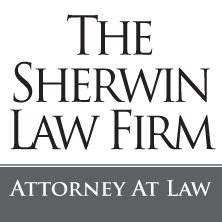What’s Required for a Foreclosure Default Notice? Massachusetts’s Highest Court Will Soon Clarify

There is old saying for those living in New England: if you don’t like the weather, wait a few minutes. The same can be said about Massachusetts foreclosure law: if you don’t like a particular decision . . . wait a few minutes.
This is evident by a recent decision from the First Circuit Court of Appeals, that requests the Supreme Judicial Court to clarify the requirements for a foreclosure default notice, commonly known as “paragraph 22.” This comes from the Thompson decision, a ruling in favor of homeowners against a foreclosure sale that has been widely criticized by many in the real estate field. The full decision is below.
Background on Paragraph 22
The vast majority of homeowners in the United States have a mortgage agreement that uses a standard form. This standard form mortgage comes from Fannie Mae and Freddie Mac, and requires a lender to send a default notice prior to foreclosure. This requirement is generally found in paragraph 22 of this mortgage agreement.
This notice, among other things, requires specific disclosures to a homeowner prior to the start of foreclosure and provides the homeowner thirty days to pay the outstanding loan balance to avoid foreclosure.
In 2015, in a landmark court decision, the Supreme Judicial Court ruled in Pinti v. Emigrant Mortgage that lenders need to strictly comply with this foreclosure default notice requirement. Failure to include or correctly state one of the required disclosures in these notices can be grounds for setting aside a foreclosure.
The Thompson Decision
Earlier this year, the U.S. Court of Appeals for the First Circuit issued a decision applying the Pinti decision to an error in one of these paragraph 22 notices. In this decision, Thompson v. JPMorgan Chase Bank, the First Circuit ruled that the notice was defective because it mislead the borrower about when he could pay his outstanding loan balance to avoid foreclosure.
Importantly, the homeowner in Thompson never suffered any harm from this defect in his foreclosure default notice. The First Circuit suggested that any potential harm to a borrower in one of these notices was a violation of paragraph 22 and grounds for challenging a foreclosure’s validity.
Not surprisingly, many involved with Massachusetts real estate are concerned with the ramifications of this decision, and its impact on the foreclosure process. I, personally, have received many inquires about the ramifications of this decision; a sign that this area of Massachusetts foreclosure law remains in flux.
SJC to Review Requirements for a Foreclosure Default Notice
Thompson, importantly, was decided by a federal appeals court. The reason for this is that the case was brought into federal court from state court, which the law allows in certain circumstances.
The bank in Thompson asked for a reconsideration of this decision, which is rarely granted in appeals. The First Circuit declined to reconsider this decision, but instead, has asked the Supreme Judicial Court to clarify the law on foreclosure default notices and paragraph 22.
I, personally, have never heard of an appellate court doing this after issuing a decision. This is a good example of how Massachusetts foreclosure law continues to be an evolving area of law.
Conclusion
If you need assistance with a foreclosure matter, contact me for a consultation.
18-1559-2019-07-30